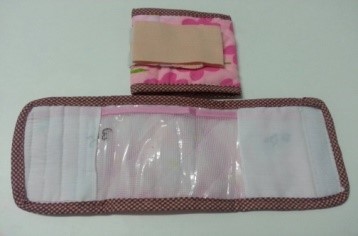การพัฒนาผลิตภัณฑ์ต้นแบบสมุนไพรฮ่อมลดไข้ในชุมชนบ้านนาคูหา จังหวัดแพร่
Main Article Content
Abstract
Chanthana Susawaengsup, Siriporn Phuntulee, Natt Wungkawan and Nirote Sinnarong
รับบทความ: 23 พฤษภาคม 2562; แก้ไขบทความ: 8 ธันวาคม 2562; ยอมรับตีพิมพ์: 2 มีนาคม 2563
บทคัดย่อ
งานวิจัยนี้มีวัตถุประสงค์เพื่อศึกษาข้อมูลทั่วไปของสมุนไพรฮ่อม เพื่อศึกษาอัตราส่วนที่เหมาะสมในการเตรียมตำรับยาสมุนไพรฮ่อมและพัฒนาผลิตภัณฑ์ต้นแบบสมุนไพรฮ่อมลดไข้ เพื่อประเมินความพึงพอใจต่อต้นแบบผลิตภัณฑ์สมุนไพรฮ่อม และเพื่อส่งเสริมการดูแลสุขภาพด้วยสมุนไพร ในชุมชนบ้านนาคูหา ตำบลสวนเขื่อน อำเภอเมือง จังหวัดแพร่ ด้วยการวิจัยพัฒนาผลิตภัณฑ์ต้นแบบสมุนไพรลดไข้ในห้องปฏิบัติการร่วมกับการวิจัยแบบมีส่วนร่วมในชุมชน ผลการศึกษาตำรับยาสมุนไพรประกอบด้วยสมุนไพรฮ่อมเป็นตัวยาหลัก เมนทอลเป็นตัวยาเสริม และสารเติมแต่งอื่นๆ ได้แก่ สารก่อเจล เอทานอล (ethanol) และกลีเซอรีน (glycerin) ได้ศึกษาชนิดของสารก่อเจลและอัตราส่วนของของผสมที่เหมาะสมของสูตรตำรับยาเพื่อให้ได้ลักษณะเนื้อเจลนุ่มลื่นและเป็นเนื้อเดียวกัน ผลิตภัณฑ์ต้นแบบเจลสมุนไพรเตรียมจากเนื้อเจลพื้นชนิดคาร์โบพอล (carbopol) ความเข้มข้น 2 เปอร์เซ็นต์ของน้ำหนักต่อปริมาตร ผสมเนื้อสมุนไพรฮ่อม และสารเติมแต่งในอัตราส่วนร้อยละ 60:25:15 โดยน้ำหนัก ผลการประเมินความพึงพอใจต่อต้นแบบผลิตภัณฑ์สมุนไพรฮ่อมที่ได้รับความพึงพอใจในระดับมากที่สุด ทางด้านลักษณะทางกายภาพ ได้แก่ด้านสี (เฉลี่ย = 4.70) ด้านประสาทสัมผัส ได้แก่ ด้านกลิ่น (เฉลี่ย = 4.65) ด้านรูปแบบบรรจุภัณฑ์ ได้แก่บรรจุหีบห่อพร้อมใช้ด้วยวัสดุทางการแพทย์ (หน้ากากอนามัยซีลขอบข้าง) และเนื้อเจลบรรจุถุงตาข่ายใส่ช่องแผ่นรัดฝ่าเท้า (เฉลี่ย = 4.35) และด้านรูปแบบที่ต้องการให้พัฒนา ได้แก่แบบหลอดบีบ (เฉลี่ย = 4.30) ผลการวิจัยจะเป็นแนวทางส่งเสริมการนำสมุนไพรฮ่อมมาใช้สำหรับบรรเทาอาการไข้และการดูแลสุขภาพแบบพึ่งพาตนเองของกลุ่มชุมชนพื้นที่สูง จังหวัดแพร่
คำสำคัญ: การพัฒนาผลิตภัณฑ์, เจลสมุนไพรลดไข้, สมุนไพรฮ่อม, ผลิตภัณฑ์ต้นแบบสมุนไพร
Abstract
This research aims to study a general description of Hom, to study the optimal of herb ratio for herbal preparation and herbal prototype product development for reducing fever, to evaluate satisfaction of herbal prototype product, and to promote healthcare by using local herb. This research was performed at Nakuha village Mueang District, Phrae province by using laboratory research incorporate with participatory action research. From the study, the herbal medicine consists of Hom herbs as active ingredient, menthol as adjuvant and corrective such as gelling agent, ethanol and glycerin. The appropriate gel formulation and ratio of the formulation were studied to obtain a smooth, homogeneous gel texture. The herbal gel product is prepared from 2% w/v carbopol as base gel, together with Hom herb and correctives at ratio 60:25:15 by weight. The research result found that the highest satisfied of herbal gel prototype product in terms of physical appearance is color (mean = 4.70), senses is sensory smell (mean = 4.65), and packaging type are modified medical masks and the gel is packed in the strapping sheet (mean = 4.35). The highest satisfied model of herbal prototype development is packaged in a squeeze tube (mean = 4.30). The research results can be used to promote the use of Hom for fever relief and self-reliant health care for highland communities in Phrae provice.
Keywords: Product development, Fever reducing herbal gel, Hom herb, Herbal prototype
Downloads
Article Details

This work is licensed under a Creative Commons Attribution-NonCommercial 4.0 International License.
References
Ausavakitviree, V., and Wongyai, S. (2015). Thai herb development path for sustain-ability. Medicine and Herb Newsletter 2(5): 6–9. (in Thai)
Chanthavanich, S. (2006). Data Analysis for Qualitative Research. 7th ed. Bangkok. Chulalongkorn University. (in Thai)
Eiadthong, W., and Pholdee, O. (2011). Assam indigo dye utilization status and wisdoms conservation of Tai minorities. Journal of Forest Management 5(10): 19–32. (in Thai)
Ho, Y. L., Kao, K. C., Tsai, H. Y., Chueh, H.Y., and Chang, Y. S. (2003). Evaluation of antinociceptive, anti–inflammatory and antipyretic effects of Strobilanthes cusia leaf extract in male mice and rats. The American Journal of Chinese Medicine 31(1): 61–69.
Honda, G., and Tabata, M. (1979). Isolation of antifungal principle tryptanthrin, from Strobilanthes cusia O. Kuntze. Planta Medica 36 (1): 85–90.
Hou, H. C., and Liang, S. Z. (2006). Determination of indirubin and indigo in Baphicacanthus cusia by HPLC. Zhong yao Cai 29(7): 681–682. (Chinese with English abstract)
Li, L., Liang, H. Q., Liao, S. X., Qiao, C. Z., Yang, G. J., and Dong, T. Y. (1993). Chemical studied of Strobilanthes cusia. Acta Pharmaceutica Sinica B 28(3): 238–240. (Chinese with English abstract)
Liau, B. C., Jong, T. T., Lee, M. R., and Chen, S. S. (2007). LC–APCI–MS method for detection and analysis of tryptanthrin, indigo and indirubin daqingye and banlangen. Journal of Pharmaceutical and Biomedical Analysis 4(43): 346–351.
Pan–Ngom, K., Mungkita, W., and Boonwongsri, S. (2009). Micropropagation of Hom (Strobilanthes cusia (Nees) Kuntze). Final Research Report. Maejo University. (in Thai)
Pichiensunthorn, C., and Jeerawongsa, V. (2013). Manual of Thai Traditional Pharmacy, Episode 5: Multi–Pharmacy. Bangkok. Amarin Printing. (in Thai)
Srirachan, D., and Prasitwuttiwet, T. (2006). Formulation of Clinacanthus nutans (Burm.f.) Lindau. for External Use. A Special Project of the Bachelor Degree of Science in Pharmacy, Faculty of Pharmacy, Mahidol University. Nakornpathom. (in Thai)
Suthepornwirote, S. (2014). Faculty of Pharmacy developed herb gel for reduced fever and relaxed. Faculty of Pharmacy, Chiangmai University. Retrieved from http:// www.pharmacy.cmu.ac.th/web2553/n12.php, November 30, 2014.
Sutprasert, K. (1997). Participatory Action Re-search for Officers. Bangkok: Office of Human Resource Development, Ministry of Education. (in Thai)
Tanaka, T., Ikeda, T., Kaku, M., Zhu, X. H., Okawa, M., Yokomizo, K., Uyeda, M., and Nohara, T. (2004). A new lignan glycoside and phenylethanoid glycosides from Strobilanthes cusia Bremek. Chemical and Pharmaceutical Bulletin (Tokyo) 52(10): 1242–1245.
Thanased, W., Cheanjunyakul, A., Thongbumpen, U., Sanwaranggoon, R., and Kureungrutsamee, J. (2015). The effects of using innovative cold pack blanket to reduce body temperature in brain & neurosurgery patients with hyperthermia. Journal of Boromarajonani College of Nursing, Bangkok 31(1): 70–81. (in Thai)
Vanichbuncha, K. (2007). Statistical Analysis: Statistic for Management and Research. 10th ed. Bangkok: Chulalongkorn University.
